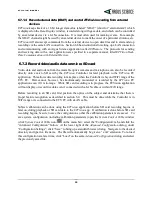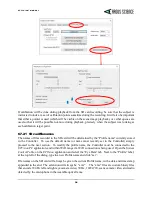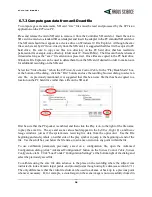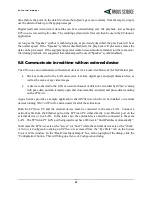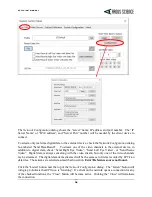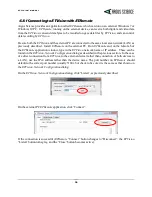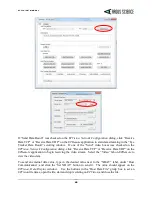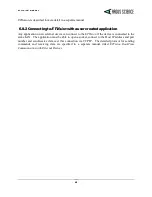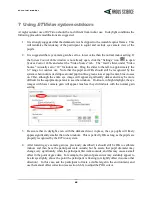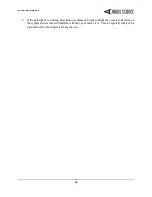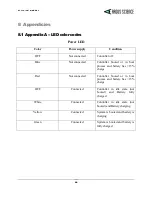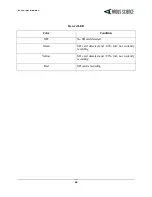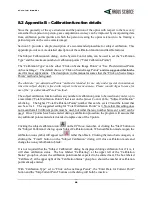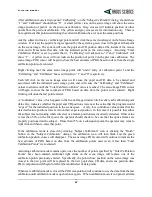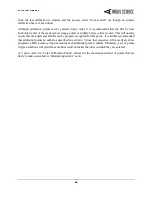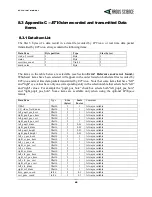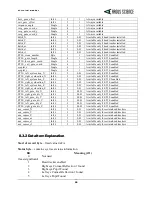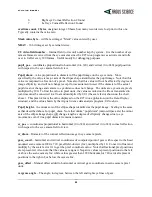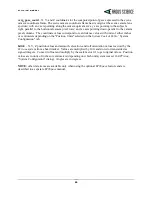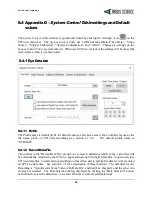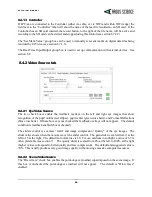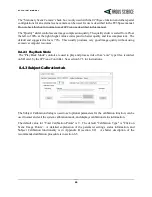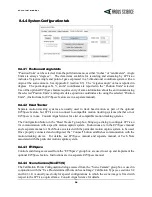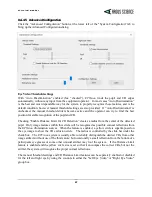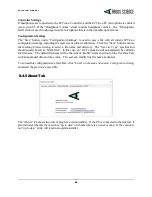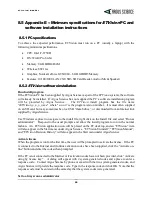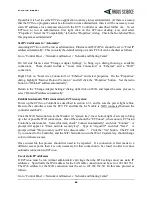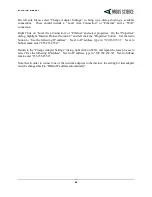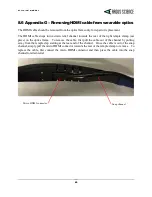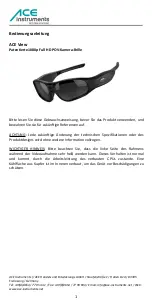
E T V I S I O N M A N U A L
47
After calibration mode is first opened “Calibrating”, on the “Subject Calibration” dialog, should show
“1” and “Calibrated” should show “0”. A small yellow cross on the scene image will show the scene
image position of point 1 on the previous calibration. Gray crosses will indicate position of other
points from the previous calibration. The yellow and gray crosses are for information only. There is
no requirement that points used during the current calibration be at or near the same positions.
Ask the subject to fixate a visible target point and left click the same visual target on the Scene Image
window. If at least the pupil is being recognized by the system, a green cross will appear at that point
on the scene image. The system will note the pupil and CR position data at the instant of the mouse
click, and will associate that data with the indicated point on the scene image. Assuming “Total
Calibration Points” is set to greater than 1, “Calibrating” will advance to “2” and “Calibrated” will
show “1”. A yellow cross will now indicate the position of point 2 on the previous calibration. The
scene image POG cursor will begin to show the best estimate of POG based on data from the single
calibration point so far entered.
Right clicking near the same scene image point will “undo” entry of calibration point 1 and the
“Calibrating” and “Calibrated” boxes will return to “1” and “0” respectively
Each left click on the scene image screen will cause the pupil and CR data to be entered and
associated with the indicated scene image point, and will cause the “Calibrating” and “Calibrated”
values to advance until the “Total Calibration Points” value is reached. The scene image POG cursor
will begin to show the best estimate of POG based on data from the points so far entered. Right
clicking will undo the last point entered.
A “confidence” value, which appears in the Scene Image window title bar after each calibration point
data entry, indicates whether the pupil and CR positions were near the value that the program would
“expect” for the indicated position in the scene space. A very low confidence value means that the
detected feature positions were far from their expected position. In this case it is possible that either
the subject was not looking where directed, or a feature position was incorrectly detected. If this value
is less than 50% on the first point, the operator should check to be sure that the optics frames are
properly positioned on the subject. If less than 75% on a subsequent point, the operator may want to
right click and then re-enter that point.
If the calibration mode is closed (by clicking “Subject Calibration” icon or clicking the “Finish”
button on the “Subject Calibration” dialog), the calibration icon will turn black and the green
calibration position crosses will disappear. The scene image POG cursor will continue to indicate the
best estimate of POG based on data from the calibration points used (even if less than “Total
Calibration Points” were entered) .
Assuming calibration mode remains open, once the number of points specified by “Total Calibration
Points” have been entered, additional right clicks on the scene image will replace one of the
calibration points previously entered. Specifically, the point whose position on the scene image was
closest to the new point will be replaced by the new pupil data, CR data, and scene position data.
POG computation will begin to reflect the modified set of data points.
Whenever calibration mode is closed the POG computation will continue to use the data from the last
calibration until calibration mode is opened once again. When calibration mode is re-opened, all data

